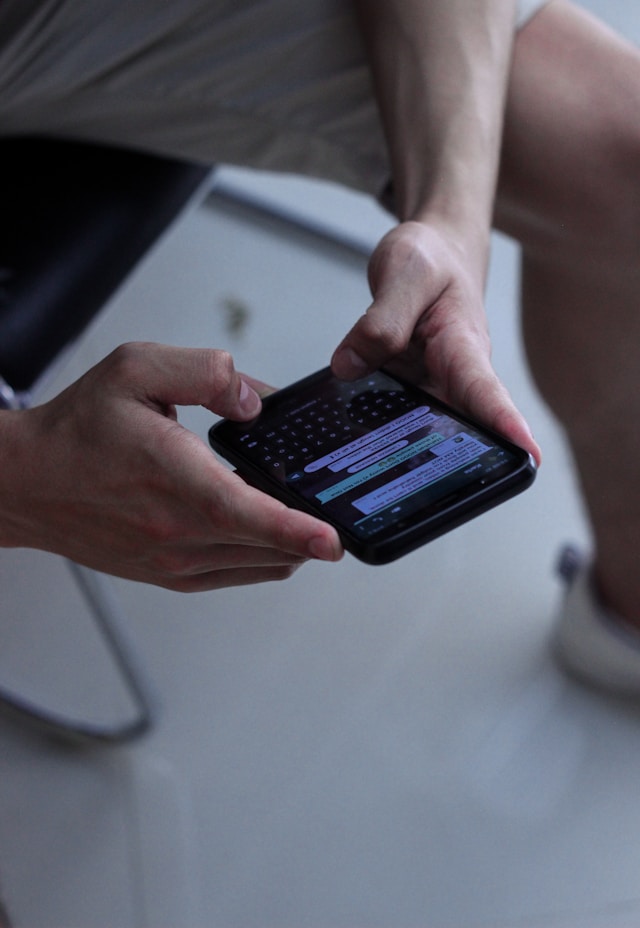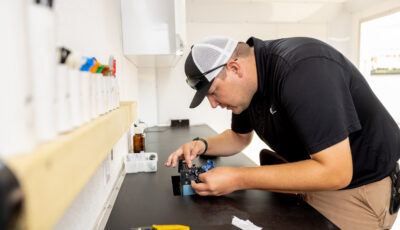Jason had been waiting for this moment all season. It was the championship game, and his team was inches away from a win. Five seconds on the clock, down by two, and he and his friends could almost taste the thrill of a last-second victory.
They lived for this: the intensity, tension, and the chance to dance and scream their lungs out when their team pulled off the impossible.
He cleared his schedule for this, invited friends, ordered pizzas from Casey’s and the OP, wore his lucky jersey, and made sure every detail was perfect. All that was left was to enjoy the game.
Jason’s other friends had been blowing up the group chat with anxious messages, and his crew was ready to join in on the celebration—or the shared agony of a close loss.
The Worst Possible Moment
But as the quarterback approached the line of scrimmage, Jason noticed something strange: the picture was starting to blur. He thought it was his eyes, so he blinked and refocused, but the image didn’t get any clearer. Then, the unthinkable happened. The screen froze. The dreaded buffering wheel appeared.
“No, no, no! Not now!” he screamed, his heart racing. He scrambled for the remote, jabbing the buttons like they were game controllers, but nothing worked. His WiFi had chosen the worst possible moment to betray him. The wheel kept spinning, teasing him as if to say, “You don’t get to see this.”
FOMO (Frustration Of Missing Out)
This wasn’t the first time Jason’s WiFi had let him down. He remembered other times—streaming movies, hosting online game nights, even during work meetings—when his connection had faltered at crucial moments. But this was different. This was THE game, and his team’s entire season had been building up to this play. Missing it was unthinkable.
He’d brushed off these interruptions in the past, telling himself it was just bad luck. But he knew the rumors, little tidbits shared between frustrated friends, about why this happened. Internet Service Providers (ISPs) often experience network congestion during peak hours, when everyone is online at once—watching movies, playing games, or, like him, streaming live events. Studies show that streaming quality is most affected between 7 p.m. and 11 p.m., a period known as the “Internet rush hour.”
The Cause Behind the Chaos
Jason knew all about peak usage times, but he thought his connection could handle it. His ISP advertised high speeds and reliable service, but when the pressure was on, his WiFi buckled under the strain. He remembered reading somewhere that WiFi interference was another major issue, especially in neighborhoods with a lot of overlapping networks. Data packets get jammed up, providers throttle subscribers, slowing things down, and there wasn’t much a regular person like him could do to prevent it.
“Come on!” he groaned, still clicking the remote frantically. One of his guests tried to stream the game from their phone, but it was too late. When the other device started streaming, the screen blinked back to life, showing the aftermath. His team was celebrating on the field, jumping up and down, helmets in the air. They’d won, and everyone at Jason’s house had missed everything.

Empty Feeling
Jason and his guests stared at the screen, feeling a mix of relief and frustration. The thrill of victory was there, but it was diluted, tainted by the buffering that had robbed them of the game-winning moment. He could hear text messages popping up on his phone:
- “Can you believe that play?”
- “What a throw!”
- “I’m losing my mind right now!”
Each notification felt like salt in a wound.
This wasn’t just about the game anymore. It was about every time he’d been left out, every moment he had missed because of a bad connection. He felt powerless, as if enjoying these simple pleasures was always at the mercy of an unstable signal.
From Confusion to Clarity
He picked up his phone, ignoring the stream of texts, and asked Siri to look up a phone number. He knew he needed to do something about this once and for all. He had heard about CLtel from a coworker who’d switched ISPs months ago. They’d raved about how their service hadn’t hiccuped once, even during peak hours, thanks to their investment in fiber-to-the-home networks that reduced latency and ensured stable upload and download speeds.
Jason thought of all the moments he had lost to buffering, the group calls that had glitched out, and now, the moment that could’ve been his favorite sports memory of the year, stolen by a spinning wheel.
As he dialed CLtel’s local number, he couldn’t help but wonder how he had put up with unreliable service for so long. “I need something that actually works,” he muttered, shaking his head.
When Taylor’s cheerful voice answered on the other end, he explained his problem, reliving the frustration of the night’s game all over again. But this time, he felt something different—a sense of control. As he listened to Hillary explain their solutions, it dawned on him that he didn’t have to put up with poor quality anymore. It was a choice, and he was ready to make the switch.
Experience + Connection = Everything
Because missing out wasn’t just about the game. It was about the things that mattered—connecting with friends, celebrating victories, and sharing the moments that made life enjoyable. And Jason wasn’t going to let bad WiFi take those away anymore.
By not settling for unreliable WiFi, Jason learned that a good connection goes beyond streaming. It’s about maintaining meaningful connections and fully experiencing important moments.
For more stories like Jason’s, visit our website.
Until next time. Stay connected.



